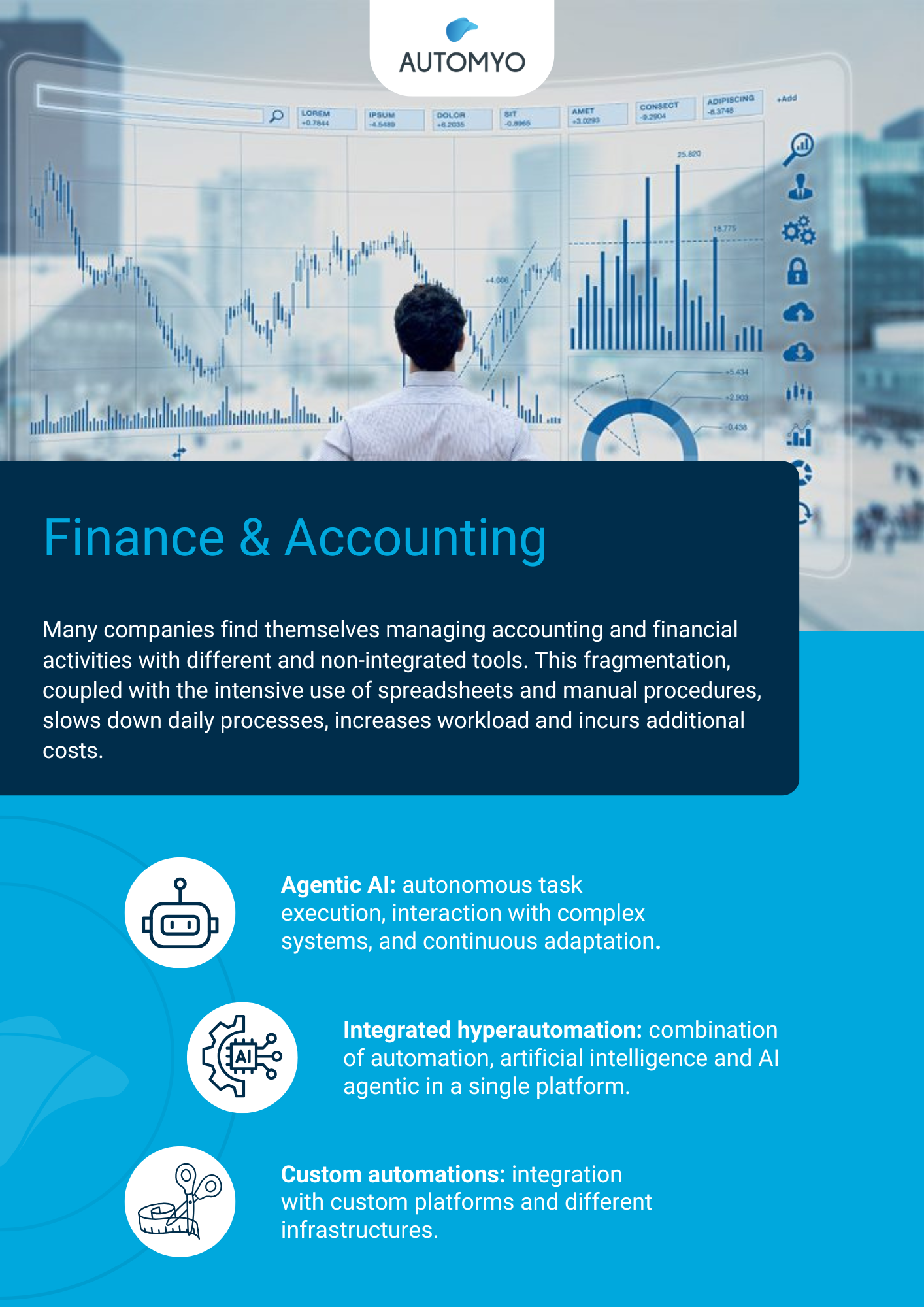FINANCE AND ACCOUNTING
Finance and accounting departments are focused on repetitive tasks, complex approvals, and reconciliations between systems that are often not integrated. This makes processes slow and fragmented, with bottlenecks and a high risk of errors, some of which can be serious.
Automation means integrating systems, streamlining processes, and simplifying tasks without losing control.

What will you find in this One Pager?
Three processes that slow down work in finance departments every day.
How to automate without changing tools or revolutionizing processes.
The real benefits for those who have already streamlined their daily operations.
Traceability
Flexibility
Interoperability
Effectiveness

Why Finance’s role is critical?
It is one of the departments with the highest number of repetitive tasks, tools to cross-reference, and steps that require control.
When each operation involves multiple people, systems, and formats, it doesn’t take much to slow everything down.
Automyo addresses these critical issues: it automates what is currently done manually, integrates with existing systems, and streamlines daily operations without disrupting them.
